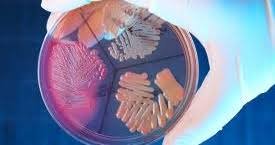How to Remove Pathogens from Water Systems

How to Remove Pathogens from Water Systems
In pharmaceutical water systems (Purified Water, WFI, and water used in clean utilities), controlling and removing microbial pathogens is critical to meet GMP and pharmacopeial standards.
1. Source Control
-
Use protected and treated raw water sources.
-
Pre-treatment (sand filter, multimedia filter, activated carbon filter) to reduce organic load that supports microbial growth.
2. Pathogen Removal & Control Methods
a. Filtration
-
Pre-filters / Cartridge filters (5 µm / 1 µm): Remove suspended particles and some microorganisms.
-
Membrane filters (0.2 µm): Physically retain bacteria and some larger microbes.
b. UV Irradiation
-
UV at 254 nm damages microbial DNA → prevents replication.
-
Installed at strategic points (post-RO, before storage tank, before use points).
-
Requires regular validation and quartz sleeve cleaning.
c. Reverse Osmosis (RO)
-
Removes >99% bacteria, endotoxins, and dissolved salts.
-
Acts as a major barrier for microbial entry.
d. Ozonation
-
Ozone is a strong oxidizing agent that destroys bacteria, fungi, and viruses.
-
Commonly used for Purified Water storage & distribution loops.
-
Breaks down into oxygen, leaving no residue.
e. Thermal Sanitization
-
Hot Water (≥80 °C) or Steam Sanitization of storage tanks and distribution loops.
-
Effective against biofilms and resistant microorganisms.
-
Often used in WFI systems.
f. Chemical Sanitization
-
Periodic use of sodium hypochlorite, hydrogen peroxide, peracetic acid, or hot ozone water.
-
Followed by rinsing and validation to avoid chemical residues.
g. Continuous Recirculation
-
Keep water at constant flow in the loop (avoid stagnant areas).
-
Heated recirculation (≥65–80 °C for WFI) minimizes microbial growth.
3. System Design Controls
-
Smooth pipework (SS 316L, orbital welding) to avoid dead legs.
-
Sloping pipelines for complete drainage.
-
Hygienic design of tanks and distribution points.
4. Monitoring
-
Routine microbial testing (plate counts, endotoxin testing).
-
On-line TOC and conductivity monitoring as indirect contamination indicators.
-
Trend analysis to detect early microbial growth.
✅ In short:
Pathogens are removed from water systems by a multi-barrier approach — pre-filtration, RO, UV irradiation, ozone/thermal sanitization, continuous recirculation, and hygienic system design. Monitoring + regular sanitization ensures compliance with pharmacopeial and GMP standards.
🎓 Discover one of the best Pharmaceutical Microbiology course available —click below to explore the course that’s shaping future Microbiology course skills.

